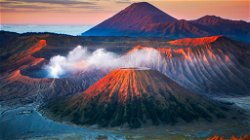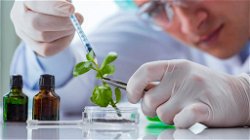Aquaculture: Approximate Aquatic Equivalent to Agriculture
James Bond
. 4 min read
Aquaculture is the farming of aquatic organisms for commercial, recreational, and scientific purposes, and has been practiced for thousands of years. Fish farming is mainly dominated by Asia, particularly China, which has produced more farmed aquatic food than the rest of the world combined since 1991. One such tool is cam chat, which allows farmers, researchers, and aquaculture enthusiasts to connect virtually and exchange knowledge and experiences in real-time. Through cam chat platforms, individuals involved in aquaculture can share best practices, discuss innovative farming techniques, and address challenges collectively.
.jpg)
Aquaculture: The Farming of Aquatic Organisms for Various Purposes
Aquaculture, also called fish farming, fish culture, or mariculture, the propagation and husbandry of aquatic plants, animals, and other organisms for commercial, recreational, and scientific purposes. Aquaculture is an approximate aquatic equivalent to agriculture that is, the rearing of certain marine and freshwater organisms to supplement the natural supply. This includes production for supplying other aquaculture operations, for providing food and industrial products, for stocking sport fisheries, for supplying aquatic bait animals, for stocking fee-fishing operations, for providing aquatic organisms for ornamental purposes.
Dominance of Fish Farming
1. Fish farming is dominated by Asia, which has produced 89 percent of the global total in volume terms in the last 20 years.
2. Over the same period, the shares of Africa and the Americas have increased, while those of Europe and Oceania have decreased slightly.
3. Outside China, several major producing countries (Bangladesh, Chile, Egypt, India, Indonesia, Norway and Viet Nam) have consolidated their shares in world aquaculture production to varying degrees over the past two decades.
4. China has produced more farmed aquatic food than the rest of the world combined since 1991. However, because of government policies introduced since 2016, fish farming in China grew by only 2.2 percent and 1.6 percent in 2017 and 2018, respectively.
Varsity of Aquaculture
1. Aquaculture can be extensive, semi-intensive or intensive, depending on the level of input and output per farming area and the stocking density. Intensive aquaculture involves intervention in the growing process, such as with supplemental feeding and water aeration (such as prawn farming), whereas extensive aquaculture allows the stock to grow on its own, using natural food sources and conditions (such as oyster farming).
2. Aquaculture can be used to produce a variety of species including fish, molluscs, crustaceans and aquatic plants for human consumption, or for producing ornamental species and other products such as pearls.
3. Aquaculture can also be operated with other agriculture activities forming an integrated aquaculture–agriculture system. An example of an integrated aquaculture–agriculture system is the farming of fish in a rice field, or an aquaponic system.
Advantages of Aquaculture:
1. Aquaculture is a Booming Industry
Today, the aquaculture industry accounts for about 52 percent of the world’s fish used for food. But by 2030, it’s anticipated that aquaculture will supply more than 60 percent of fish destined for human consumption. According to the Global Aquaculture Market Report 2022, the aquaculture market is expected to grow to $50.38 billion in 2026 at a CAGR of 7.7%.
2. Rich source of micronutrients and animal protein
Aquaculture or fish farming is considered as a great source of protein. Fish fulfills the day today necessity of animal protein to more than 1 billion people worldwide with poor resources, which is a product of aquaculture. Micronutrients, found in fishes, are also important for proper cognitive and physical development of children. Thus, aquaculture helps in overall development of people worldwide.
3. Potential to Feed Large Populations
As the population grows, so does the demand for food sources, especially protein sources. Although this demand can be met by catching wild fish, it is actually slowly depleting marine resources. Nature cannot catch up with human fishing speed, which makes many species endangered. However, fish farms are designed to be more efficient than wild fishing. Because farmers can control water quality, limit the threat of predators, and feed the fish according to their own schedule, they can produce and harvest more fish.
Effects of Fish Farming on Marine Environment
1. The most common negative environmental impacts that have been associated with aquaculture include: waters eutrophication, water quality, alteration or destruction of natural habitats; introduction and transmission of aquatic animal diseases which can change the consumption of oxygen and cause local eutrophication
2. In addition to the eutrophication that cause huge damages for the environment and local fauna, the spread and the outbreaks of diseases are negative consequences of the expansion and diversification of the aquaculture sector associated with globalization.
3. Fish farms, or “aquafarms,” discharge waste, pesticides, and other chemicals directly into ecologically fragile coastal waters, destroying local ecosystems. And aquaculture farms that raise fish directly in fenced-in areas of natural waters kill off thriving natural habitats by overloading them far beyond their capacity.
4. Waste from the excessive number of fish can cause huge blankets of green slime on the water’s surface, depleting oxygen and killing much of the life in the water. In Brazil, destruction caused by aquaculture changed the local climate so much that some aquaculture operations have been forced to shut down.
Vital Role of the Fisheries Sector in India's Socio-Economic Development
The fisheries sector has been recognized as a powerful income and employment generator as it stimulates growth of a number of subsidiary industries and is a source of cheap and nutritious food, at the same time it is an instrument of livelihood for a large section of economically backward population of the country. Fishery sector occupies an important place in the socio-economic development of the country. "Fisheries is a fast-growing sector in India, which provides nutrition and food security to a large population of the country besides providing income and employment to more than 28 million people.
Conclusion
The article provides information about the history of fishing and fish farming, its dominance in Asia, and the different types of aquaculture. One of the advantages of fish farming is that it is a booming industry and a rich source of protein and micronutrients, which can help in the overall development of people worldwide. On the other hand, the article also states that fish farms can have negative environmental impacts such as eutrophication, destruction of natural habitats, and the spread of aquatic animal diseases. The article concludes by emphasizing the vital role of the fisheries sector in India's socio-economic development.
More Stories from
Eco-Friendly Practices: How Individuals and Businesses Can Make a Difference
Discover the Power of Eco-Friendly Practices: Learn how individuals and businesses can contribute to a greener world by adopting sustainable measures.
Say No to Plastic Bags: Embracing a Sustainable Future
This article sheds light on the environmental consequences and health implications of plastic bags while providing alternative solutions.
Unveiling India's Volcanic Secrets: A Geological Overview
Explore India's unique volcanic history and the enduring forces of nature that continue to captivate scientists and adventurers alike.
Zero-Waste Living: Practical Tips for Reducing Environmental Impact
Discover the power of zero-waste living as this article offers practical tips and actionable advice for reducing your environmental impact.
Biotechnology and the Future of Medicine: Advancements and Ethical Concerns
This article explores precision medicine's personalized treatments, the promise and ethical challenges of gene editing, the potential of artificial intelligence in healthcare, and the future of organ transplantation.










.png?width=40&aspect_ratio=1:1)


.png?width=40&aspect_ratio=1:1)